Water Birds of Yala National Park
On your 4x4 Safari Tour in Yala National Park you will come across different sorts of wetland landscapes like flooded forests, mashes, lakes, rivers and ponds. Each attracts a variety of water birds in different shapes and sizes.
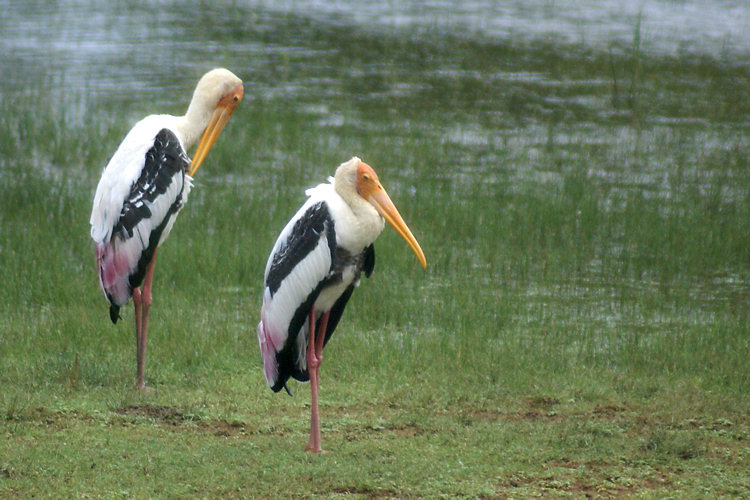
The Sri Lankan Painted Stork is a large wading bird found in Yala National Park
Each bird has evolved in its own unique way to survive in different environments on a variety of foods. Some use their feet and beaks to to dig through the waterbeds looking for aquatic insects, fish and amphibians to eat. Others use their beaks as sieves or spears.
Many water birds rely on other animals to do the digging and disturbing of the soil for them. When you spot elephants or water buffalo walking in Yala National Park you will nearly always see them being followed by a species of water bird looking to gobble up any tasty morsel it discovers.
Sri Lankan Painted Stork
These tall colorful birds look like they have sat in a pot of pink paint. It is these feathers that gives this stork its descriptive name. Their long distinctive yellow beaks can sense when prey is near. They half open their beaks and swish them from side to side in the water. If they snap at any nearby fish, frog, worm or aquatic insect that they disturb. They also use their feet to disturb the river or lake bed. They are social birds and roost in waterside trees with other storks and water birds.
They use their long wingspan like a glider. Once they are airborne they search out rising late morning thermals and effortlessly rise up in the sky with their wings stretched out. This way they move to different feeding grounds without having to spend to much energy and calories. Gliding is a more economic form of flying compared with flapping your wings.
Breeding season is normally October to November. Look up in the top of the trees to see if you can spot any giant stick nests. They will probably be stork nests, The female Painted Stork normally lays between two to five eggs. The mother sits on the eggs for about four weeks and the chicks fledge in in a further two months. The chicks are liable to predation by crows, hawkes and eagles. The parents have to be on their guard. The parents feed their young by regurgitating fish they have caught. They live for over twenty years.
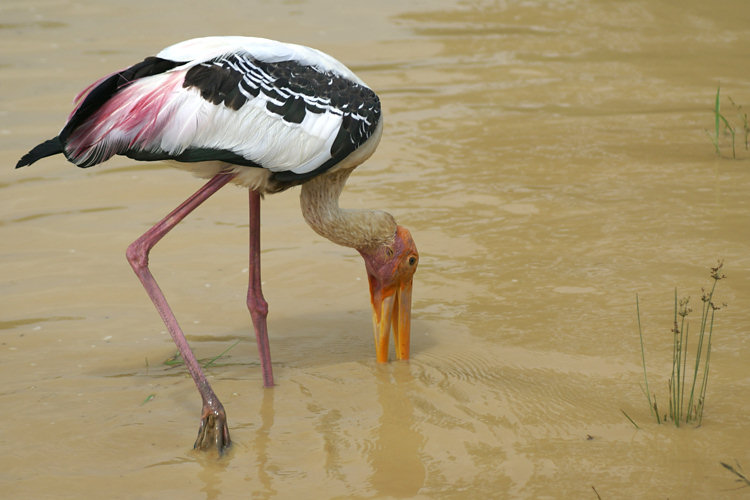
The Sri Lankan Painted Stork is a large wading bird found in Yala National Park
Sri Lankan Black Headed Ibis
These medium sized water birds are very common in Yala National Park. The Black-headed Ibis is sometimes called the Oriental White ibis. I think the first name is more appropriate as it is very descriptive and helps with identification. Their long black wading feet help disturb the silt of river, lake and marsh bed. This ibis then uses its long black curved beak to hunt around in the mud for grubs, fish, snails, worms and small frogs. Like the storks it builds its nest up in the trees out of sticks and lays between two to four eggs.
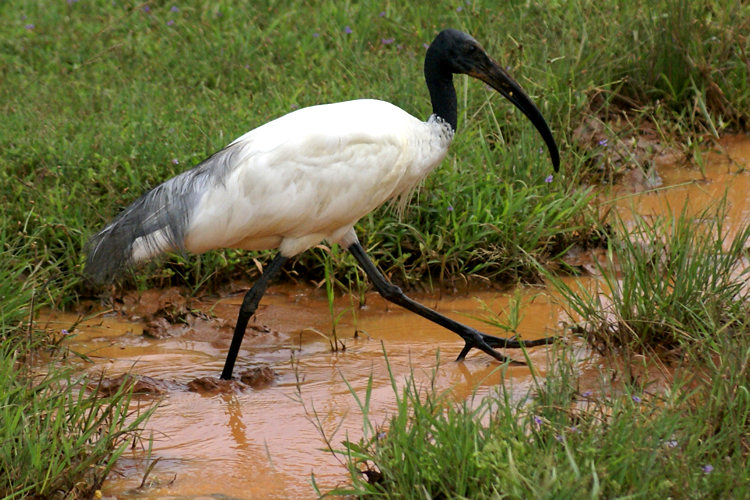
The Sri Lankan Black Headed Ibis in Yala National Park
Sri Lankan Little Egret
Though often mistaken for a member of the Ibis family this very common wading bird is the Little Egret. You often see them following Elephants and Water buffalo. They are sometimes so close to the feet of these giant animals that you fear for their safety. It would be so easy for them to be stepped on and squashed. They will nest with other water birds in colonies high up in trees near the water. They male a platform nest with twigs. The female lays between three to five eggs that are kept warm by both adult birds taking turns sitting on the eggs. They young chicks hatch in twenty one to twenty five days. Both parents look after the young who fledge after forty days.
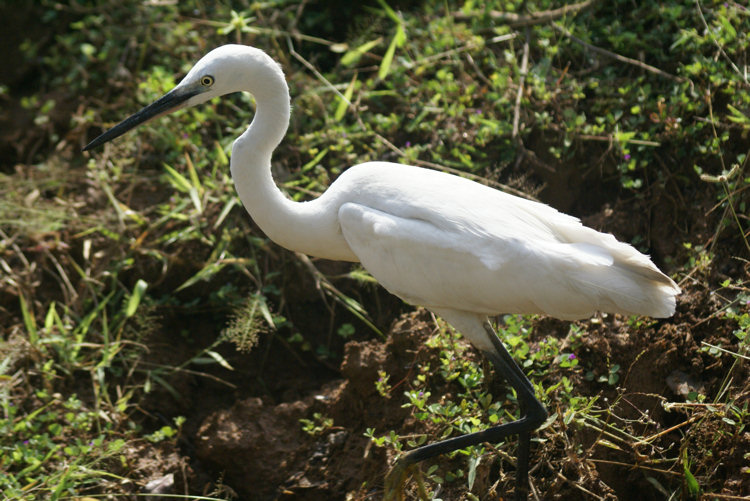
The Sri Lankan Little Egret in Yala National Park
Sri Lankan Asian Openbill Stork
These are strange looking storks that appear to have a birth defect. It is the long beak that doesn't not close that gives this stork its descriptive name. Their main preferred food source are aquatic snails and it is thought that the open bill helps this bird with finding and eating them. The edges of their bills have a fine hair brush like feature that is useful in managing a slippery snail shell. The bill is used like a nutcracker and once the snails shell has been removed it eats what is inside.
The Openbill Stork can perform this trick under water. Young chicks do not have the distinctive gap between their beaks. It develops as they grow. Just like the Painted Stork it uses its large wings to soar on the rising late morning thermals to gain height and find new feeding areas. Although it prefers to eat snails the Openbill Stork will also munch on frogs, water snakes, fish and other aquatic insects. Both male and female storks take turn in sitting on the eggs. The female normally lays between two to four eggs. They build a platform style nest high up in the tree tops near water with other water birds. The eggs hatch after twenty five days.
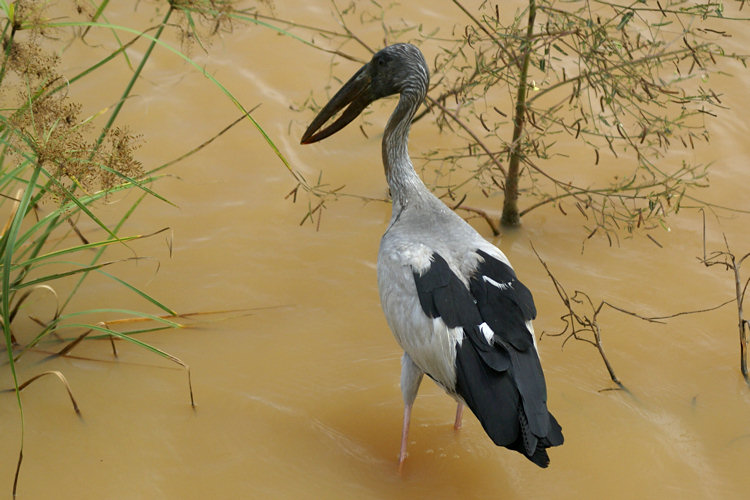
Sri Lankan Asian Openbill Stork in Yala National Park
Travel books

